
The Quarrymen are a British skiffle/rock and roll group, formed by John Lennon in Liverpool in 1956, which evolved into the Beatles in 1960. Originally consisting of Lennon and several school friends, the Quarrymen took their name from a line in the school song of their school, the Quarry Bank High School. Lennon's mother, Julia, taught her son to play the banjo, showed Lennon and Eric Griffiths how to tune their guitars in a similar way to the banjo, and taught them simple chords and songs.
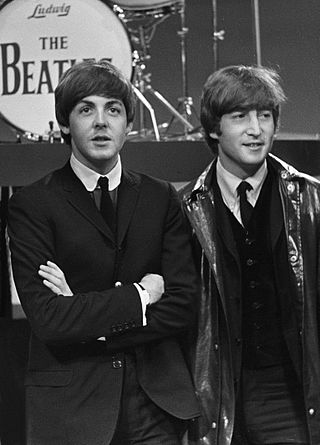
Lennon–McCartney was the songwriting partnership between English musicians John Lennon (1940–1980) and Paul McCartney of the Beatles. It is widely considered one of the greatest, best known and most successful musical collaborations ever by records sold, with the Beatles selling over 600 million records worldwide as of 2004. Between 5 October 1962 and 8 May 1970, the partnership published approximately 180 jointly credited songs, of which the vast majority were recorded by the Beatles, forming the bulk of their catalogue.
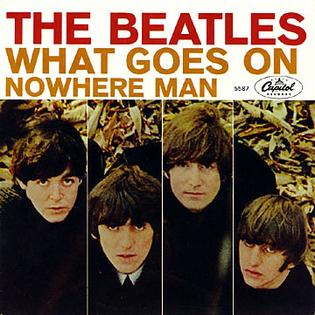
"What Goes On" is a song by the English rock band the Beatles, featured as the eighth track on their 1965 album Rubber Soul. The song was later released as the B-side of the US single "Nowhere Man", and then as the tenth track on the North America-only album Yesterday and Today. It is the only song by the band credited to Lennon–McCartney–Starkey and the only song on Rubber Soul that features Ringo Starr on lead vocals. The song reached number 81 on the US Billboard Hot 100 in 1966.

"Drive My Car" is a song by the English rock band the Beatles, written primarily by Paul McCartney, with lyrical contributions from John Lennon. It was first released on the band's 1965 album Rubber Soul as the opening track. The song later appeared in North America on the Yesterday and Today collection, again to open the record, as the track had been dropped from the American version of Rubber Soul.

"Things We Said Today" is a song by the English rock band the Beatles, written by Paul McCartney and credited to Lennon–McCartney. It was released in July 1964 as the B-side to the single "A Hard Day's Night" and on their album of the same name, except in North America, where it appeared on the album Something New. The band recorded the song twice for BBC Radio and regularly performed an abbreviated version during their 1964 North American tour.
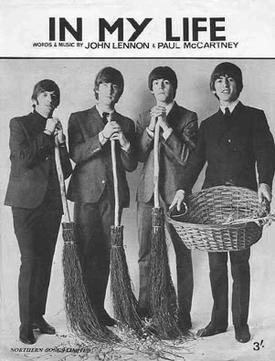
"In My Life" is a song by the English rock band the Beatles, released on their 1965 studio album, Rubber Soul. Credited to the Lennon–McCartney songwriting partnership, the song is one of only a few in which there is dispute over the primary author; John Lennon wrote the lyrics, but he and Paul McCartney later disagreed over who wrote the melody. George Martin contributed the piano solo bridge.

"You're Going to Lose That Girl" is a song by the English rock band the Beatles from their 1965 album and film Help! Credited to the Lennon–McCartney songwriting partnership, the song was mostly written by John Lennon with contributions from Paul McCartney.
"Mr. Moonlight" is a song written by Roy Lee Johnson and recorded by Dr. Feelgood and the Interns in 1962. The song was covered by the Beatles on their 1964 albums Beatles for Sale and Beatles '65.
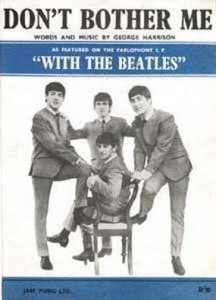
"Don't Bother Me" is a song by the English rock band the Beatles from their 1963 UK album With the Beatles. It was the first song written by George Harrison, the group's lead guitarist, to appear on one of their albums. A midtempo rock and roll song, it was originally released in the United States on the 1964 album Meet the Beatles!
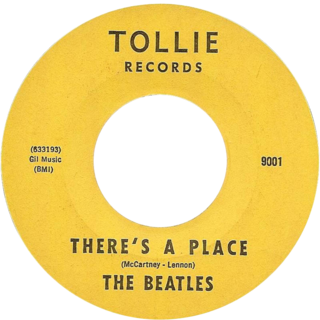
"There's a Place" is a song by the English rock band the Beatles from their debut album, Please Please Me, released in March 1963. It was written primarily by John Lennon and credited to McCartney–Lennon. In the United States, the song was released in July 1963 on the group's first US LP, Introducing... The Beatles, later reissued in January 1964 as Beatlemania surged there. It was also issued as a non-album single in the US, in March 1964, as the B-side to "Twist and Shout", reaching number 74 in the Billboard Hot 100.
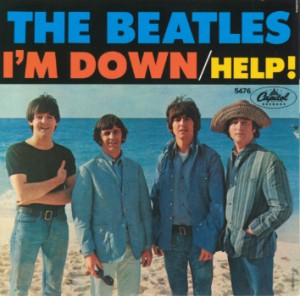
"I'm Down" is a song by the English rock band the Beatles, written by Paul McCartney and credited to Lennon–McCartney. It was released on a non-album single as the B-side to "Help!" in July 1965. The song originated in McCartney's attempt to write a song in the style of Little Richard, whose song "Long Tall Sally" the band regularly covered.
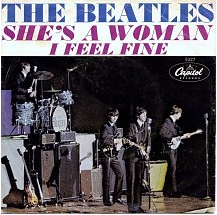
"She's a Woman" is a song by the English rock band the Beatles, written primarily by Paul McCartney and credited to Lennon–McCartney. It was released on a non-album single in November 1964 as the B-side to "I Feel Fine", except in North America, where it also appeared on the album Beatles '65, released in December 1964. Though it was the B-side, it charted in the US, reaching number four on the Billboard Hot 100 and number eight on the Cash Box Top 100. The song originated in McCartney's attempt to write a song in the style of Little Richard. The lyrics include the first reference to drugs in a Beatles song, with the line "turn(s) me on" referring to marijuana.

"In Spite of All the Danger" is the first song recorded by the Quarrymen, then consisting of John Lennon, Paul McCartney, George Harrison, pianist John Lowe, and drummer Colin Hanton.

"Teddy Boy" is a song by Paul McCartney included on his first solo album McCartney, released in April 1970. According to Ernie Santosuosso of The Boston Globe, it describes the way in which a close relationship between a widow and her grown son Teddy boy is destroyed by her new romantic interest.
"I'll Be on My Way" is a song written by Paul McCartney, credited to Lennon–McCartney, first released on 26 April 1963 by Billy J. Kramer with the Dakotas as the B-side of their hit debut single "Do You Want to Know a Secret", a song also written by Lennon–McCartney. The single reached number two in the UK charts while "From Me to You" by the Beatles occupied the number 1 position. The Beatles recorded a version of the song on 4 April 1963 for BBC radio, first released on the 1994 compilation album Live at the BBC.

"Christmas Time (Is Here Again)" is a Christmas song by the English rock band the Beatles, originally recorded for their fifth fan club Christmas record, Christmas Time Is Here Again! (1967). One of the few Beatles songs credited to all four members of the band, it consists of a blues based backing track as well as double-tracked vocals sung by them, George Martin and Victor Spinetti. The lyrics are mostly made up of the song's title refrain, repeated across nine verses.

"Ain't She Sweet" is a song composed by Milton Ager, with lyrics by Jack Yellen. It was published in 1927 by Ager, Yellen & Bornstein, Inc. It became popular in the first half of the 20th century and typified the Roaring Twenties. Like "Happy Days Are Here Again" (1929), it became a Tin Pan Alley standard. Both Ager and Yellen were elected to the Songwriters Hall of Fame.
"Hello Little Girl" is one of the first songs written by John Lennon, credited to the Lennon–McCartney songwriting partnership. Written in 1957, it was used as one of the songs at the Beatles unsuccessful Decca audition in 1962, included on the 1995 compilation album Anthology 1. A 1960 home demo recording has never been officially released.
"Thinking of Linking" is one of the first songs written by English musician Paul McCartney. Inspired by a cinema advertisement for Link Furniture, McCartney composed the song in 1958. The lyric consists of only three lines, while the music is influenced by the sound of Buddy Holly and the Crickets, particularly the song "Peggy Sue Got Married".

The English rock group the Beatles toured the United States and Canada between 19 August and 20 September 1964. The 32 concerts comprised the second stage of a world tour that started with the band's tour of Europe, Hong Kong, and Australia and finished with their UK Autumn tour. The shows in the United States were a return to the country after their brief February 1964 tour.














